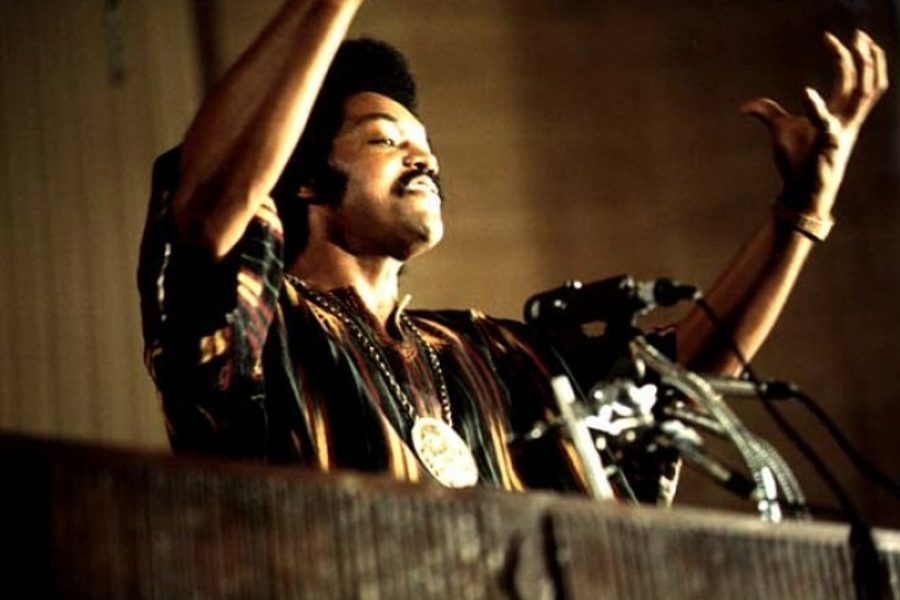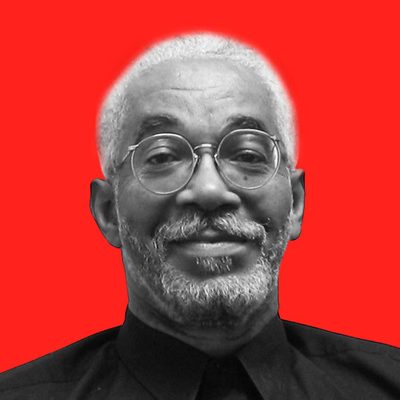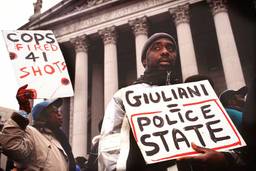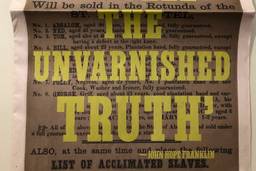Before Bernie, There Was Jesse
For a brief moment 30 years ago, it looked like our first black president would be the leader of a multiracial working-class coalition.
Salim Muwakkil

The Rev. Jesse Jackson moves a bit more deliberately to the microphone these days, slowed by a recently diagnosed case of Parkinson’s disease. His hair is graying and his waistline is expanding. This former lieutenant of the Rev. Martin Luther King Jr. is a well-traveled 76 years old.
But his lower profile may have dulled our memories of the enormous shadow he once cast on American politics and civic life. Jackson’s influence between 1983 and 1989, during which he campaigned twice for the Democratic nomination for president, was unprecedented.
Jackson’s audacious 1984 candidacy, which violated political protocol by leaping ahead of the black political elite, initially provoked considerable enmity among the ranks of black leadership. But his campaigns also ushered in a whole new crop of political aspirants and operatives. His political ascendency required unique coverage; editors wanted a knowing take on this brash, black candidate and took affirmative action to get it. Many black reporters got a shot at presidential coverage for the first time.
In 1988, Jackson shockingly won 7 million votes and came in first in 13 of 54 contests. Jackson’s electoral movement became a proxy for black aspirations. Following Jackson’s loss of the Democratic nomination to Michael Dukakis at the Atlanta convention in July 1988, I wrote: “Not since Booker T. Washington, at the turn of the century, has an African American loomed so large in the public square. … And within [the black] community, Jackson may very well be the most popular figure in history.”
By that time, his National Rainbow Coalition (NRC), an organization he formed from the fragments of his 1984 campaign, had leapt to the head of the civil rights pack. Jackson became the media’s go-to person for just about anything related to black America. Mediagenic and quick-witted, he seldom failed to provide the appropriate soundbite. Mainstream media started treating Jackson’s NRC as the mouthpiece of black politics.
Jackson’s appeal was a function of his hybridity — his political ambitions and protest inclinations went hand-in-hand with his King-like ability to link American progressivism to black religiosity. But his electoral victories also exposed some vulnerabilities yet to be redressed. In October 1988, I assessed his unparalleled ability to rally black political support: “And while this is an accomplishment worthy of pride, it is also an indication of blacks’ continued vulnerability. The need for messianic leadership is a need born of powerlessness.”
In These Times ran several stories charting Jackson’s evolution from civil rights agitator to political candidate. Perhaps evolution is the wrong word, given that his presidentiaal efforts were as much crusades as campaigns.
His progressive 1988 campaign earned the distinction of attracting the kind of white rural support usually allotted to conservative Republicans. Some of Jackson’s supporters even credited him with stunting the growth of white supremacist groups. “Jesse is the only candidate competing with those racist groups for the populist vote, and he’s winning,” Jackson campaign adviser Robert Starks told me in March 1988. “By reaching out for rural whites, he’s defusing a lot of the fascist racism that’s right below the surface in much of agrarian America. And he’s received very little credit for this.”
The odd juxtaposition of black activist Jackson posing with assorted white farmers became a common media trope. Today many progressives see similarities between Jackson’s populist NRC and Bernie Sanders’ Our Revolution, and think such populism might be just the thing to trump Trump.
The 1988 election also revealed some of the disdain the Democratic Party establishment held for black voters. Following Jackson’s robust showing, the forces of Democratic nominee Michael Dukakis sought to minimize Jackson’s influence. Their efforts were so flagrant it triggered this strong reaction from Roger Wilkins, a veteran of both the John F. Kennedy and Lyndon Johnson administrations: “As a former Democratic administration appointee, I would have found it incredible 10 years ago that I would have even entertained any conversation about options outside the Democratic Party,” Wilkins told me. “But white people have done their damnedest to us. Both parties have shown us their contempt.”
The most salient beneficiary of Jackson’s path-breaking efforts may have been Barack Obama. And even though Obama’s successive, successful campaigns have shown Democrats the benefit of inclusion, black politicians still complain about that bipartisan contempt.
Salim Muwakkil is a senior editor of In These Times and host of “The Salim Muwakkil Show” on radio station WVON-AM in Chicago. Muwakkil was also contributing columnist for both the Chicago Sun-Times (1993 – 1997) and the Chicago Tribune (1998 – 2005). He is also a co-founder of Pacifica News’ network daily “Democracy Now” program and served as an adjunct professor at Northwestern University, University of Illinois, the Art Institute of Chicago and Chicago’s Columbia College.









